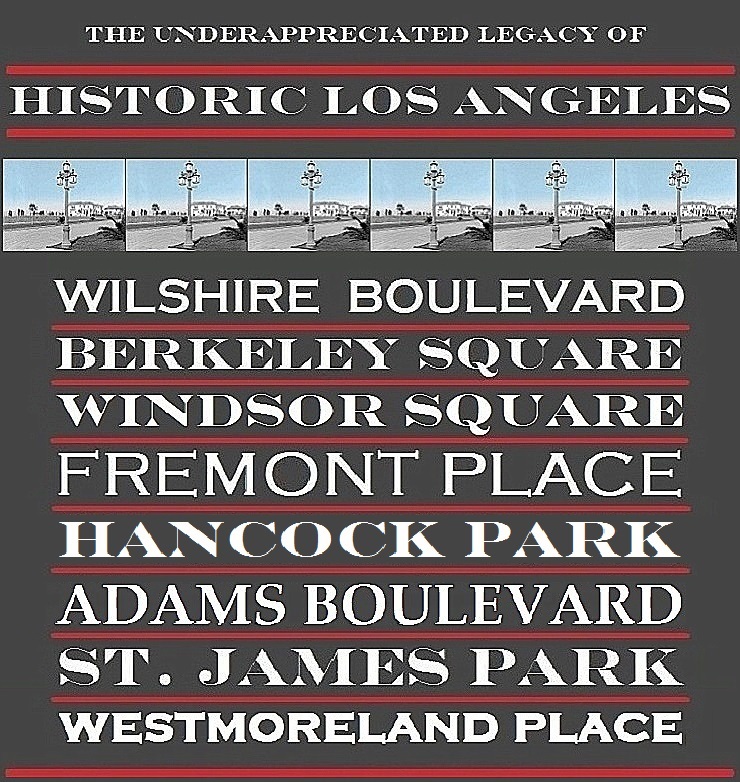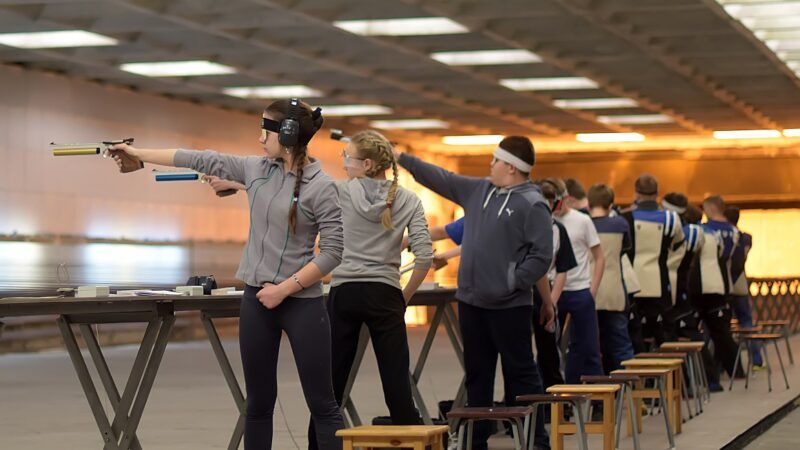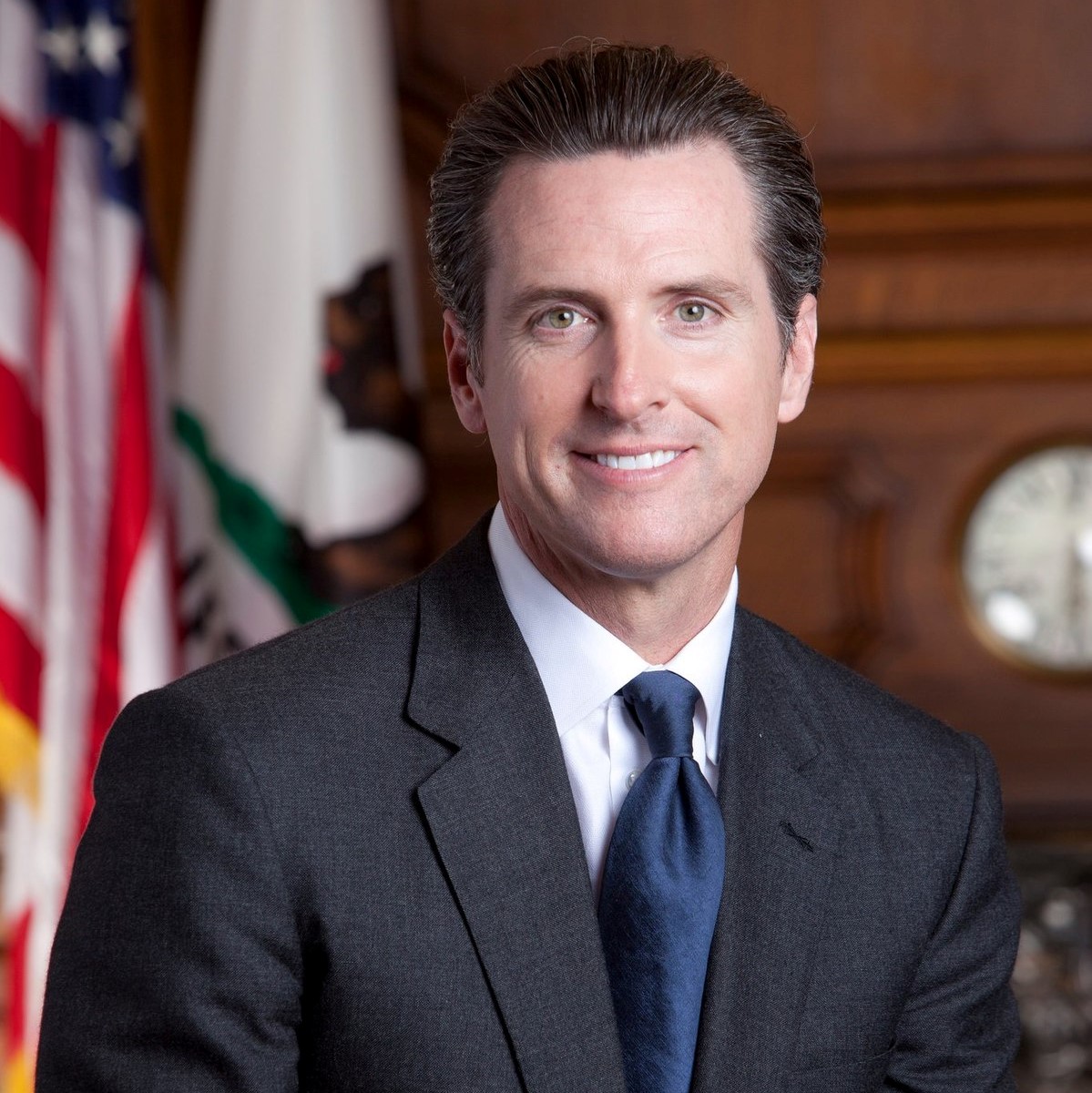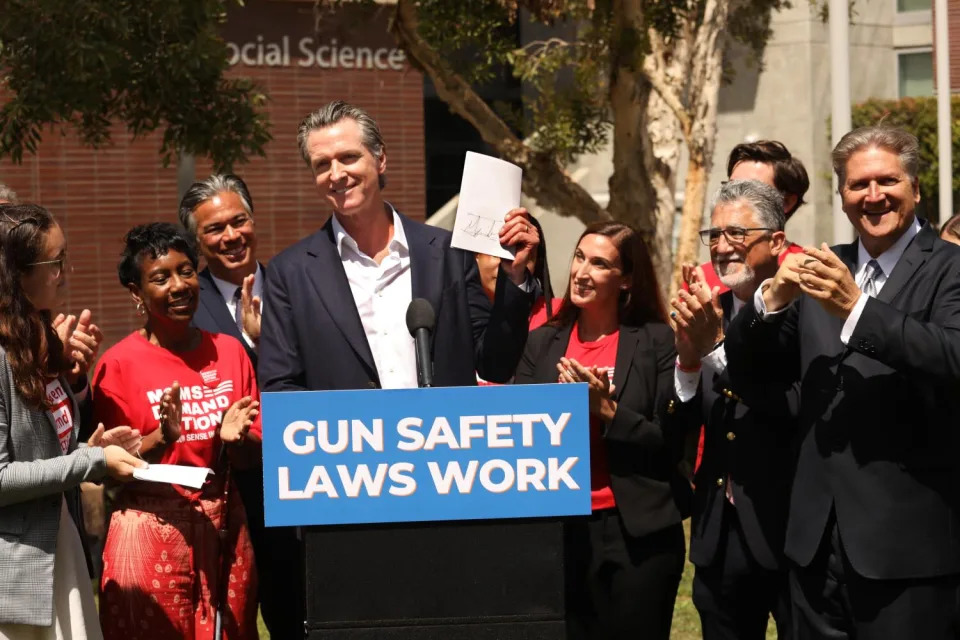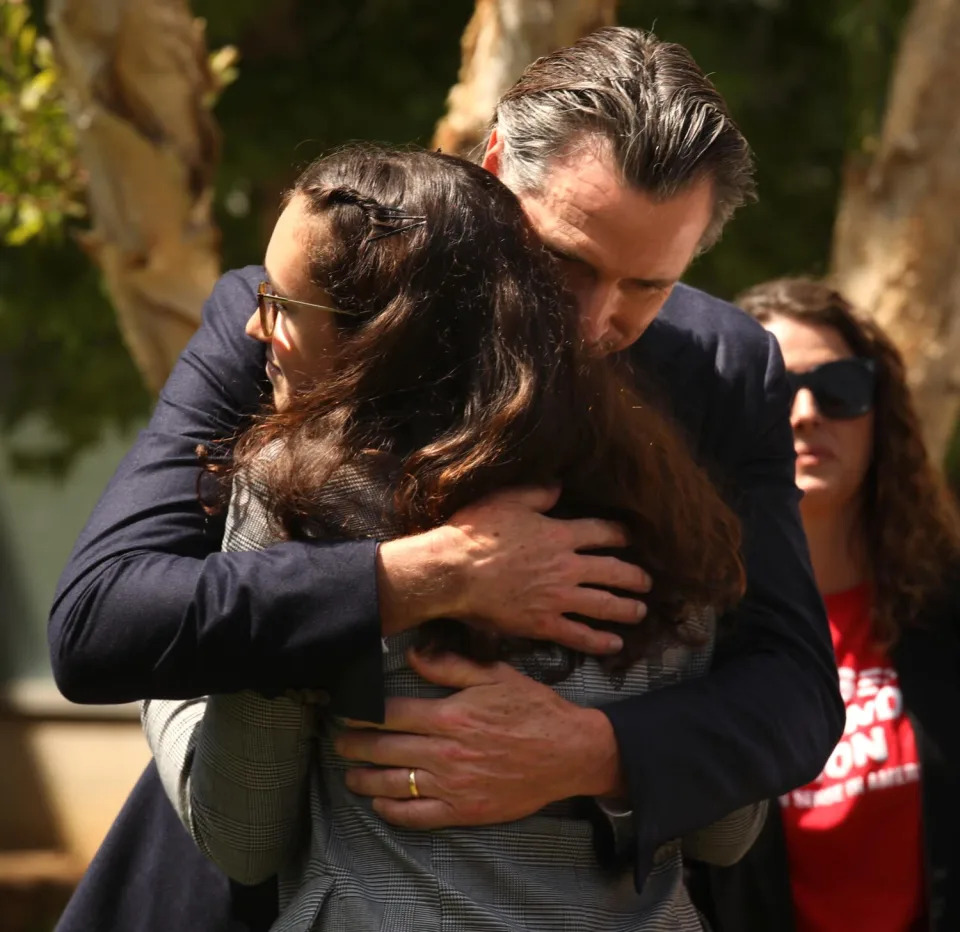GOC has been hammering the point for years that our singular best remedy to the anti-gun garbage is going to be in the courts. Thankfully, the recent SCOTUS decision in NYSRPA v Bruen set the stage in elaborate fashion for what’s to come down the legal road.
Until that time, however, the Left has made no bones about it: they are out to do whatever they can to make sure that lawful citizens are as far away from guns as possible. While this may sound like some far-right conspiracy rant, it’s very true. Forget the ridiculous mantra of “I support the Second Amendment, but…” – forget the BS that all they want is “reasonable gun reform.” These are lies, lies and damn lies. The Left does not trust us – nor do they want us to be able to protect ourselves. Neither do they want us to protect our families, our homes or our businesses. Their real intent has become abundantly clear, especially given their antipathy for law enforcement: No guns. Nowhere.
Senator Anthony Portantino is especially keen on the no guns anywhere philosophy. His SB 918 was obviously introduced in angry response to the recent SCOTUS decision because it legally established California a “shall issue” state, and that’s not on the Left’s progressive menu.
Senator Portantino must be driven by something besides anger – it’s quite possible he’s literally terrified of people who have a CCW because his bill stipulates that there are about 2 places in the entire state where one can carry a concealed weapo n outside of their own home. He has likely trembled with fear when going out for dinner with fellow legislators after work. He may wonder who’s in the next booth, legally carrying a gun? Gasp!
n outside of their own home. He has likely trembled with fear when going out for dinner with fellow legislators after work. He may wonder who’s in the next booth, legally carrying a gun? Gasp!
And what about when he heads to Whole Foods to pick up some organic asparagus to go with his grilled chicken dinner? Uh oh! Who may have a concealed firearm while testing the cantaloupe in the produce section?
What if he’s on a picnic or an outdoor concert with his family at one of Napa’s lovely vineyards? Yikes! There might be someone snacking on some crackers and brie who might have a CCW! The trauma!
Portantino is clearly fearful of safe and responsible people being able to carry a concealed firearm, but doesn’t seem too preoccupied with the bad guys that are plaguing his very own Los Angeles County. Is he one of the privileged who can hire private security like so many celebrities? According to World Protection Group CEO Kent Moyer, because crime continues to rise in California, more celebrities are starting to hire private security. In Hollywood alone, homicides have jumped an incredible 75%, yet LAPD arrests are down by 20%. It’s no wonder people want some ability to protect themselves. Evidently though, elected officials like Portantino (and those who share his politics) don’t believe this should apply to the rest of us.
SB 918 is chock-full of highly subjective criteria – from who can be granted a CCW to who is even permitted to apply. Those on even the most benign prescription medications need not apply.
When SB 918 gets a thumbs up from the Legislature and Governor in the next few weeks, it will be interesting to see who on the Left will be shocked to learn their armed security detail won’t be able to follow them into virtually any facility in the state. (Check out the list below of prohibited areas for CCW holders – especially those that are bolded). The limitations are so significant, a CCW will be deemed useless.
Remember, no lawsuit can be filed until the law becomes operative; if the final version of the bill has an urgency clause, it will go into effect as soon as the Governor signs it. If the bill passes without the urgency, it would become effective January 1, 2023.
With far too many Californians making bad decisions by repeatedly electing anti-gun politicians, the courts have become our best recourse. While it seems as if we may not be successful in the short term, GOC is in it for long game and ultimately, we will come out of the mess with some significant wins. But it’s going to take some patience, hard work and yep – money. Rest assured, GOC will be involved the legal challenges to this legislation – and other bills that undermine the Second Amendment. Please support us in these efforts – the costs are great but the rewards will be greater.
Section 26230 is added to the Penal Code, to read:
(a) A person granted a license to carry a pistol, revolver, or other firearm capable of being concealed upon the person pursuant to Section 26150, 26155, or 26170 shall not carry a firearm on or into any of the following:
(1) A place prohibited by Section 626.9.
(2) A building, real property, or parking area under the control of a preschool or childcare facility, including a room or portion of a building under the control of a preschool or childcare facility. Nothing in this paragraph shall prevent the operator of a childcare facility in a family home from owning or possessing a firearm in the home if no child under child care at the home is present in the home or the firearm in the home is unloaded, stored in a locked container, and stored separately from ammunition when a child under child care at the home is present in the home so long as the childcare provider notifies clients that there is a firearm in the home.
(3) A building, parking area, or portion of a building under the control of an officer of the executive or legislative branch of the state government. government, except as allowed pursuant to paragraph (2) of subdivision (b) of Section 171c.
(4) A building designated for a court proceeding, including matters before a superior court, district court of appeal, or the California Supreme Court, parking area under the control of the owner or operator of that building, or a building or portion of a building under the control of the Supreme Court. Court, unless the person is a justice, judge, or commissioner of that court.
(5) A building, parking area, or portion of a building under the control of a unit of local government, unless the firearm is being carried for purposes of training pursuant to Section 26165.
(6) A building, real property, and parking area under the control of an adult or juvenile detention or correctional institution, prison, or jail.
(7) A building, real property, and parking area under the control of a public or private hospital or hospital affiliate, mental health facility, nursing home, medical office, urgent care facility, or other place at which medical services are customarily provided.
(8) A bus, train, or other form of transportation paid for in whole or in part with public funds, and a building, real property, or parking area under the control of a transportation authority supported in whole or in part with public funds.
(9) A building, real property, and parking area under the control of a vendor or an establishment where intoxicating liquor is sold for consumption on the premises.
(10) A public gathering or special event conducted on property open to the public that requires the issuance of a permit from a federal, state, or local government and sidewalk or street immediately adjacent to the public gathering or special event but is not more than 1,000 feet from the event or gathering, provided this prohibition shall not apply to a licensee who must walk through a public gathering in order to access their residence, place of business, or vehicle.
(11) A playground or public or private youth center, as defined in Section 626.95, and a street or sidewalk immediately adjacent to the playground or youth center.
(12) A park, athletic area, or athletic facility that is open to the public and a street or sidewalk immediately adjacent to those areas, provided this prohibition shall not apply to a licensee who must walk through such a place in order to access their residence, place of business, or vehicle.
(13) Real property under the control of the Department of Parks and Recreation or Department of Fish and Wildlife, except those areas designated for hunting pursuant to Section 5003.1 of the Public Resources Code, Section 4501 of Title 14 of the California Code of Regulations, or any other designated public hunting area, public shooting ground, or building where firearm possession is permitted by applicable law.
(14) Any area under the control of a public or private community college, college, or university, including, but not limited to, buildings, classrooms, laboratories, medical clinics, hospitals, artistic venues, athletic fields or venues, entertainment venues, officially recognized university-related organization properties, whether owned or leased, and any real property, including parking areas, sidewalks, and common areas.
(15) A building, real property, or parking area that is or would be used for gambling or gaming of any kind whatsoever, including, but not limited to, casinos, gambling establishments, gaming clubs, bingo operations, facilities licensed by the California Horse Racing Board, or a facility wherein banked or percentage games, any form of gambling device, or lotteries, other than the California State Lottery, are or will be played.
(16) A stadium, arena, or the real property or parking area under the control of a stadium, arena, or a collegiate or professional sporting or eSporting event.
(17) A building, real property, or parking area under the control of a public library.
(18) A building, real property, or parking area under the control of an airport or passenger vessel terminal, as those terms are defined in subdivision (a) of Section 171.5.
(19) A building, real property, or parking area under the control of an amusement park.
(20) A building, real property, or parking area under the control of a zoo or museum.
(21) A street, driveway, parking area, property, building, or facility, owned, leased, controlled, or used by a nuclear energy, storage, weapons, or development site or facility regulated by the federal Nuclear Regulatory Commission.
(22) A church, synagogue, mosque, or other place of worship, including in any parking area immediately adjacent thereto, unless the operator of the place of worship clearly and conspicuously posts a sign at the entrance of the building or on the premises indicating that license holders are permitted to carry firearms on the property. Signs shall be of a uniform design as prescribed by the Department of Justice and shall be at least four inches by six inches in size.
(23) A financial institution or parking area under the control of a financial institution.
(24) A police, sheriff, or highway patrol station or parking area under control of a law enforcement agency.
(25) A polling place, voting center, precinct, or other area or location where votes are being cast or cast ballots are being returned or counted, or the streets or sidewalks immediately adjacent to any of these places.
(26) Any other privately-owned commercial establishment that is open to the public, unless the operator of the establishment clearly and conspicuously posts a sign at the entrance of the building or on the premises indicating that license holders are permitted to carry firearms on the property. Signs shall be of a uniform design as prescribed by the Department of Justice and shall be at least four inches by six inches in size.
(27) Any other place or area prohibited by other provisions of state law.
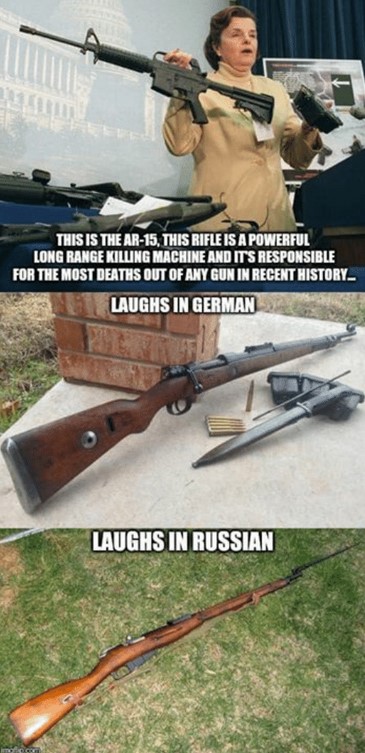




 n outside of their own home. He has likely trembled with fear when going out for dinner with fellow legislators after work. He may wonder who’s in the next booth, legally carrying a gun? Gasp!
n outside of their own home. He has likely trembled with fear when going out for dinner with fellow legislators after work. He may wonder who’s in the next booth, legally carrying a gun? Gasp!
